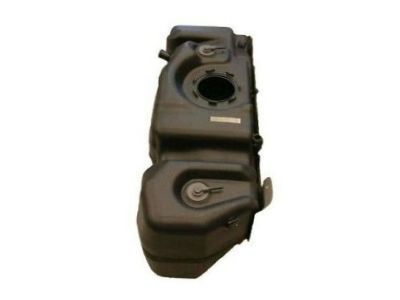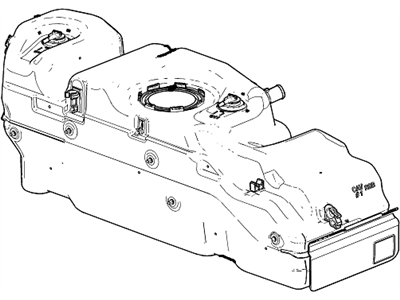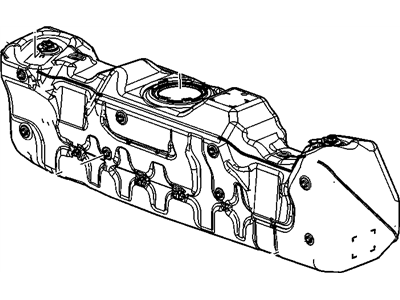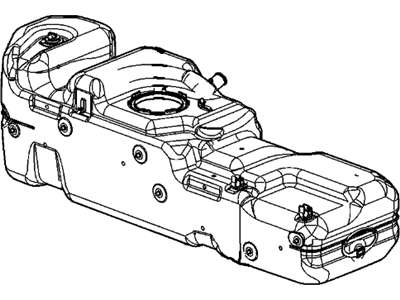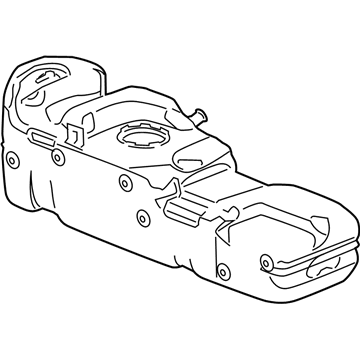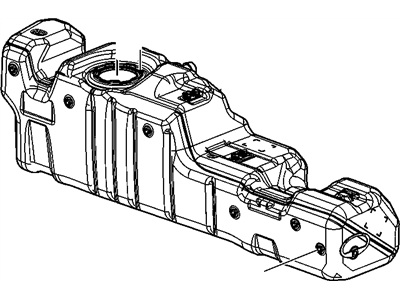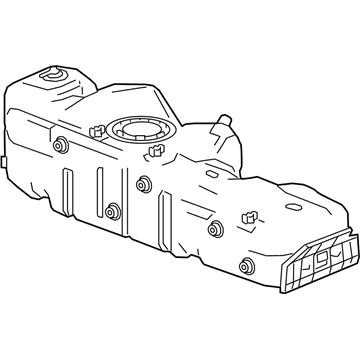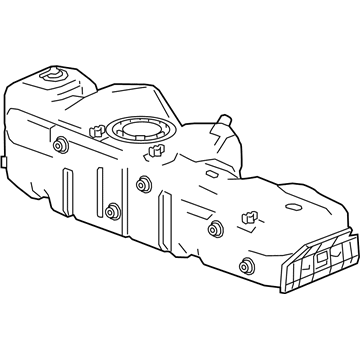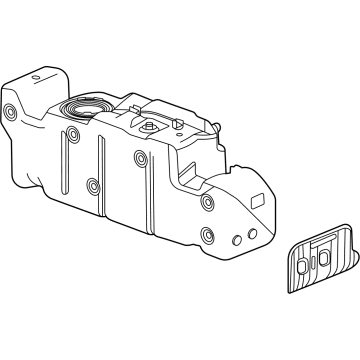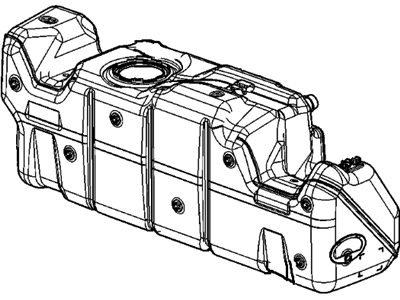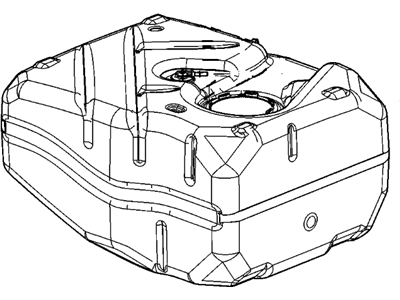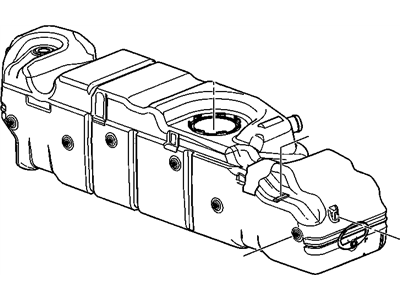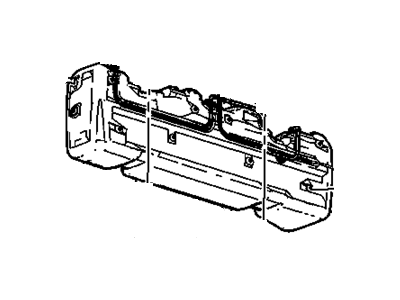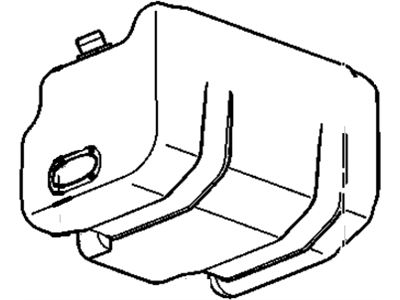
My Garage
My Account
Cart
Genuine Chevrolet Silverado Fuel Tank
Gas Tank- Select Vehicle by Model
- Select Vehicle by VIN
Select Vehicle by Model
orMake
Model
Year
Select Vehicle by VIN
For the most accurate results, select vehicle by your VIN (Vehicle Identification Number).
58 Fuel Tanks found
Chevrolet Silverado Tank Assembly, Fuel
Part Number: 25833022$793.20 MSRP: $1196.37You Save: $403.17 (34%)Ships in 1-3 Business DaysChevrolet Silverado Tank Assembly, Fuel
Part Number: 22772344$850.87 MSRP: $1283.34You Save: $432.47 (34%)Ships in 1-3 Business DaysChevrolet Silverado Tank Assembly, Auxiliary Fuel
Part Number: 25901690$676.48 MSRP: $1020.35You Save: $343.87 (34%)Chevrolet Silverado Tank Assembly, Fuel
Part Number: 23138361$845.02 MSRP: $1274.53You Save: $429.51 (34%)Ships in 1-3 Business DaysChevrolet Silverado Tank Assembly, Fuel
Part Number: 23360475$754.70 MSRP: $1138.33You Save: $383.63 (34%)Chevrolet Silverado TANK ASM-FUEL
Part Number: 85636629$518.63 MSRP: $782.28You Save: $263.65 (34%)Ships in 1-2 Business DaysChevrolet Silverado Tank Assembly, Fuel
Part Number: 84878521$117.74 MSRP: $176.78You Save: $59.04 (34%)Chevrolet Silverado Tank Assembly, Fuel
Part Number: 23360476$680.01 MSRP: $1025.65You Save: $345.64 (34%)Ships in 1-3 Business DaysChevrolet Silverado TANK ASM-FUEL
Part Number: 85569380$209.99 MSRP: $315.30You Save: $105.31 (34%)Ships in 1-3 Business DaysChevrolet Silverado Tank Assembly, Fuel
Part Number: 23287871$993.90 MSRP: $1499.10You Save: $505.20 (34%)Chevrolet Silverado TANK ASM-FUEL
Part Number: 85636625$534.75 MSRP: $806.57You Save: $271.82 (34%)Ships in 1-2 Business DaysChevrolet Silverado Tank Assembly, Fuel
Part Number: 84838543$358.73 MSRP: $538.64You Save: $179.91 (34%)Ships in 1-3 Business DaysChevrolet Silverado Tank Assembly, Fuel
Part Number: 23360477$877.36 MSRP: $1323.32You Save: $445.96 (34%)Ships in 1-3 Business DaysChevrolet Silverado TANK ASM-FUEL
Part Number: 85112833$804.35 MSRP: $1213.20You Save: $408.85 (34%)Chevrolet Silverado Tank Assembly, Fuel
Part Number: 25901674$351.17 MSRP: $527.29You Save: $176.12 (34%)Ships in 1-3 Business DaysChevrolet Silverado Tank Assembly, Fuel
Part Number: 23360478$911.92 MSRP: $1375.45You Save: $463.53 (34%)Chevrolet Silverado Tank Assembly, Fuel
Part Number: 15825664$522.07 MSRP: $787.44You Save: $265.37 (34%)Chevrolet Silverado Tank Assembly, Fuel
Part Number: 15104089$650.68 MSRP: $981.41You Save: $330.73 (34%)Chevrolet Silverado Tank Assembly, Auxiliary Fuel
Part Number: 15104086$668.25 MSRP: $1007.91You Save: $339.66 (34%)
| Page 1 of 3 |Next >
1-20 of 58 Results
Chevrolet Silverado Fuel Tank
The Fuel Tank of Chevrolet Silverado is one of the vehicles' component parts which is responsible for holding liquid fuel and its vapor with safety and has always been mounted at the back part of the vehicle. It is also important to point that the shape and design of the tank depends upon the kind of the specialised make and Silverado model. The design includes a fuel cap and opening for refuelling conveniently; additionally it incorporates a fuel pipe filler and vent, and the fuel outline that attaches to the engine. Some fuel tanks are made of metal while others are made of plastic; the OEM tanks can be expensive but there are available tanks. These are mainly use to store and transport flammable fluids such as gasoline or diesel to the engine; varying in manufacturing techniques from industrial production techniques to locally made and fitted for certain vehicles and operations in machines. It has to do with appropriate design solutions, choice of the materials, assembly, and testing to guarantee operational effectiveness and non-negotiable safety.
Each OEM Chevrolet Silverado Fuel Tank we offer is competitively priced and comes with the assurance of the manufacturer's warranty for the part. Furthermore, we guarantee the speedy delivery of your orders right to your doorstep. Our hassle-free return policy is also in place for your peace of mind.
Chevrolet Silverado Fuel Tank Parts Questions & Experts Answers
- Q: What is the recommended service for a plastic fuel tank that is leaking or damaged on Chevrolet Silverado?A:The fuel tank is made of plastic and cannot be repaired if it leaks or gets damaged. The only approved service is to replace the entire tank. To remove sediment from the bottom of the tank, it is recommended to have it steam-cleaned. Before cleaning, it is important to remove the Fuel Pump/level sending unit and all EVAP system components. After cleaning, allow sufficient time for the tank to air-dry before putting it back into service.
- Q: How to remove a fuel tank on Chevrolet Silverado?A:To remove the fuel tank, first disconnect the cable from the negative battery terminal and relieve the fuel system pressure. Then, raise the vehicle and remove the fuel tank rock guard if equipped. Loosen and disconnect the fuel tank filler neck hose and EVAP system vent hose, as well as the EVAP line that goes to the EVAP canister and the fuel supply line quick-connect fitting at the front of the fuel tank. If there is still fuel in the tank, siphon or hand-pump the remaining fuel through the tank filler neck pipe. Detach any clips securing the Fuel Pump/fuel level sending unit harness and support the fuel tank. Remove the two fuel tank strap bolts and disengage each strap hinge from its mounting bracket before carefully lowering the tank to access the fuel pump/fuel level sensor module and disconnecting the electrical connectors. To install, simply reverse the removal steps.
Related Chevrolet Silverado Parts
Browse by Year
2024 Fuel Tank 2023 Fuel Tank 2022 Fuel Tank 2021 Fuel Tank 2020 Fuel Tank 2019 Fuel Tank 2018 Fuel Tank 2017 Fuel Tank 2016 Fuel Tank 2015 Fuel Tank 2014 Fuel Tank 2013 Fuel Tank 2012 Fuel Tank 2011 Fuel Tank 2010 Fuel Tank 2009 Fuel Tank 2008 Fuel Tank 2007 Fuel Tank 2006 Fuel Tank 2005 Fuel Tank 2004 Fuel Tank 2003 Fuel Tank 2002 Fuel Tank 2001 Fuel Tank 2000 Fuel Tank 1999 Fuel Tank
